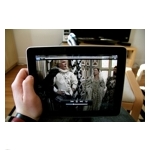 Mobile telecom customers are watching a lot more in the way of online video, and in some unexpected ways and unexpected places, but they are also frustrated with service delivery, according to new research presented in Motorola Mobility’s Fourth Annual Media Engagement Barometer.
Mobile telecom customers are watching a lot more in the way of online video, and in some unexpected ways and unexpected places, but they are also frustrated with service delivery, according to new research presented in Motorola Mobility’s Fourth Annual Media Engagement Barometer.
Customer frustration with mobile video viewing spells opportunity for service providers that can get it right by delivering reliable, high-quality mobile video services across devices and platforms, according to Motorola Mobility. An independent global study of video consumption habits among 9,500 consumers in 17 countries, its Media Engagement Barometer looks closely at new and emerging content trends, such as multi-screen habits and recording behaviors.
“This year’s study shows us that consumers take their viewing experiences very seriously,” commented Motorola Mobility senior vice president, Converged Solutions John Burke. “They want to be firmly in control of the way they experience their videos, but they’re frustrated.”
Also among Motorola Mobility’s latest findings:
- Consumers around the world are watching an average of 25 hours of TV programming and film content a week. Film viewing has risen from 5 to 6 hours. TV viewing is up from 10 hours in 2011 to 19 hours this year
- Recording behaviors are now a constant of the content experience – but content is being forgotten; almost a third (29%) of weekly TV viewing is of recorded content, but almost a third of recorded content is also never watched
- The living room remains the epicenter of the home content experience, but the multi-screen home is now a reality; the study shows the impact of Laptops, Tablets and Smartphones – on viewing throughout the home
- Consumers want to be able to move content between devices more easily; 76% would be interested in a service that automatically loaded content a user liked to their mobile phone or tablet, to enjoy when on the move
Though 50% of those surveyed reported watching broadcast TV in the living room, the proliferation of smartphones and tablets is driving viewing outside the living room: smartphones and tablets are used more than broadcast TV in the bedroom – 46% and 41% as compared to 36%, respectively. Mobile devices are also used to view video content in other rooms – 10% of tablets are used in the kitchen, according to Motorola Mobility’s latest Media Engagement Barometer.
In its latest report, Motorola Mobility dubs tablet owners “super users:”
- On average, tablet owners watch 6.7 hours of movies a week versus the average of 5.5 of non-tablet owners
- Tablet users are more likely than non-tablet owners to use a service provider’s TV catch-up service (47% versus 31%). 80% of a tablet user’s content is recorded, versus 65%
Though viewing video content “live” still predominates (73% is viewed when aired), nearly one-third (29%) of weekly content viewed is recorded, Motorola Mobility found. DVR owners watch an average of one hour more content per week.
More than one-third (36%) of all content recorded is never actually viewed, however. A full 41% of content recorded by US consumers is never viewed, the highest percentage worldwide.
Why do viewers record video content? Motorola Mobility found that:
- 77% record because there is other content airing at the same time, which the viewer would prefer to watch live
- 72% are hoarders – recording to collect the box-set
- 68% globally record to skip advertisements on commercial channels, rising to 75% and 74% in the UK and US, respectively
Researchers also found that consumers are increasingly storing content for later viewing when away from home. Doing so could be made easier, however. More than three-quarters (76%) of respondents would be interested in a service that automatically loaded content of interest to them onto their mobile phone or tablet to enjoy when on the move.
- The majority of US (71%), UAE (79%) and Turkish (85%) respondents would be interested in this service
- Consumers in France, UK and Germany are less favorable to this opportunity, with only 50%, 47% and 41% saying they would be interested in this sort of service
- Currently, 55% have downloaded or stored a TV program or film to at least one device
- 73% of global respondents have a laptop, versus 60% and 26% who own smartphones or tablets
Younger viewers are more apt to share viewing experiences via social media and a companion device: 50% of global consumers do not follow social media conversations about a TV program on a companion device but 60% of 16-24 year-olds do.
- The UK falls from 39% in 2010 to 24% in 2012; the US falls from 32% to 23%
- Increases were seen in Turkey, 44% in 2010 to 55% in 2012; and in the UAE, rising from 60% to 64%
“People are more likely to use social media channels to recommend content than they are to make oral recommendations (38% versus 34%),” according to Motorola Mobility’s press release.
“The study also shows potential to use social media to further deepen audience interaction and sharing. Seventy-eight percent would be interested in linking their social network profile to a TV service to share what they are watching and increase online, real-time discussion.”
Image courtesy of flickr user bendodson.

